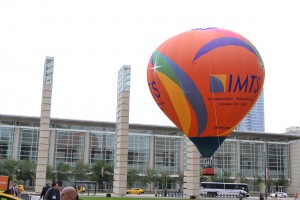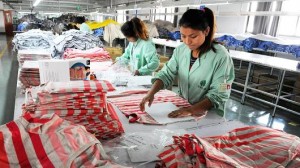SOurce: Forbes September 30 2015
Is Manufacturing In The US Becoming Fashionable And Feasible Again?
Two lifestyle companies are proving that is possible to manufacture in the United States. In fact when the tide turned and everybody went overseas to Asia, these two stayed at home, rallying for a different business model — one that was set on long-term gains.
Duluth Pack and Topo Designs specialize in a mixture of rugged outdoor backpacks, messenger bags for city dwellers, accessories, and clothing. Their stories offer an alternative to the tales of companies opting for cheaper, larger scale production facilities.
If these two can do it, and keep their doors open, is there hope for more American brands to resurface and survive? Seems so.
Tom Sega, a well-traveled businessman, says he got tired of rolling through briefcases and bags. “All of them would just fall apart.” That’s when he discovered Duluth Pack, a Minnesota-based company that made leather and canvas bags in their 100-year old workshop. “I just wanted something that wouldn’t break on me in a few months.”
“That’s how I landed in this position. I became a fan of their products,” he says in a phone interview from their historic headquarters. ”I’m now sitting in the building where they’ve been making the products for 104 years.”
Named after its hometown, Duluth, Minnesota and a pack designed with leather straps and canvas, nicknamed the Duluth Pack, the company was founded in 1882. The brand was started by Camille Poirier, a French-Canadian, who opened shop and filed for a patent for the original Duluth Pack design.
In 2007, however, when Sega stepped in as president, a position that he had sought after, business was challenging. Duluth Pack had an expensive product, much more costly than the standard backpack at big box stores, he says.
“It was a luxury item, in a time of a recession. It was something people could do without.”
Yet, he didn’t veer off the American-made track, even if that meant the company could increase its profit margins.
“We didn’t shrink. We stuck true to our guns.” Rather, the company grew from 21 employees, in 2007, to 90 today.
Manufacturing in America is expensive, Sega says, not just because of the labor but all the frills that come on top of paying a worker a fair wage. There’s the benefits, the 401k plan, health insurance, he lists. “Those costs have to be absorbed somewhere.”
Hence, the retail prices are high. The company’s most iconic canoe packs range from $100 to $400.
Duluth items are manufactured in a workshop, or what Sega refers to as the ‘sewing room.’ When he joined the company, he says, it was hard to find people who were artisans and could craft these bags. They had to be trained how to sew. “We were hiring people because they could show up on time, do their job diligently, and learn the craft along the way. It was an education on the job.”
Today, as the company’s brand has become more widely known, skilled craftsmen and women apply to work at Duluth Pack. They can produce up to 1,000 bags a week, or 4,000 a month. Given that Duluth offers 175 different styles in various colors and fabrics, it’s more of a custom order build than an off-the-rack company. “We don’t have stock in all 175 styles sitting here at the workshop,” Sega clarifies. Often times the bags are personalized to a customer’s request.
The bags at Duluth Pack, much like Topo Designs, come with a lifetime guarantee. If they fall apart, both companies are happy to repair. It’s part of the long-term vision to keep quality high, customers satisfied, and environmental impact low.
In fact, Sega says that he’s seen a shift in the clientele that’s opting for these ‘Made in America’ designs. More younger customers, from 30 upwards, he says, are buying their bags. “People are going back to appreciating quality. Young people are saving up to buy one solid product.”
Topo Designs founder Jedd Rose says that the production story helps sell the product: “We found that if we tell the ‘Made in America’ story to our consumers, they are willing to pay to support the local cycle.”
Topo’s primary customer base is Millennials who want a simple solution that takes them from hiking to work — preferably, all in one bag. That simplicity, with a 60s and 70s vibe, is what inspired designer Jedd Rose to take on an outdoor brand — an industry that he knew as a consumer, not as an entrepreneur.
Rose began his venture from the basement of his Fort Collins home on a “shoestring budget,” he says. Rose was the creative force, designing and sewing the packs himself whereas his friend and business partner Mark Hensen focused on sales, relying on his local contacts in the region, to help them secure their first orders.
It wasn’t till 2011, (3 years after the company had been cobbled together in Rose’s home), that the two started building out their team. Today, the company has 18 full-time staff with a handful of part-time employees on the retail end.






